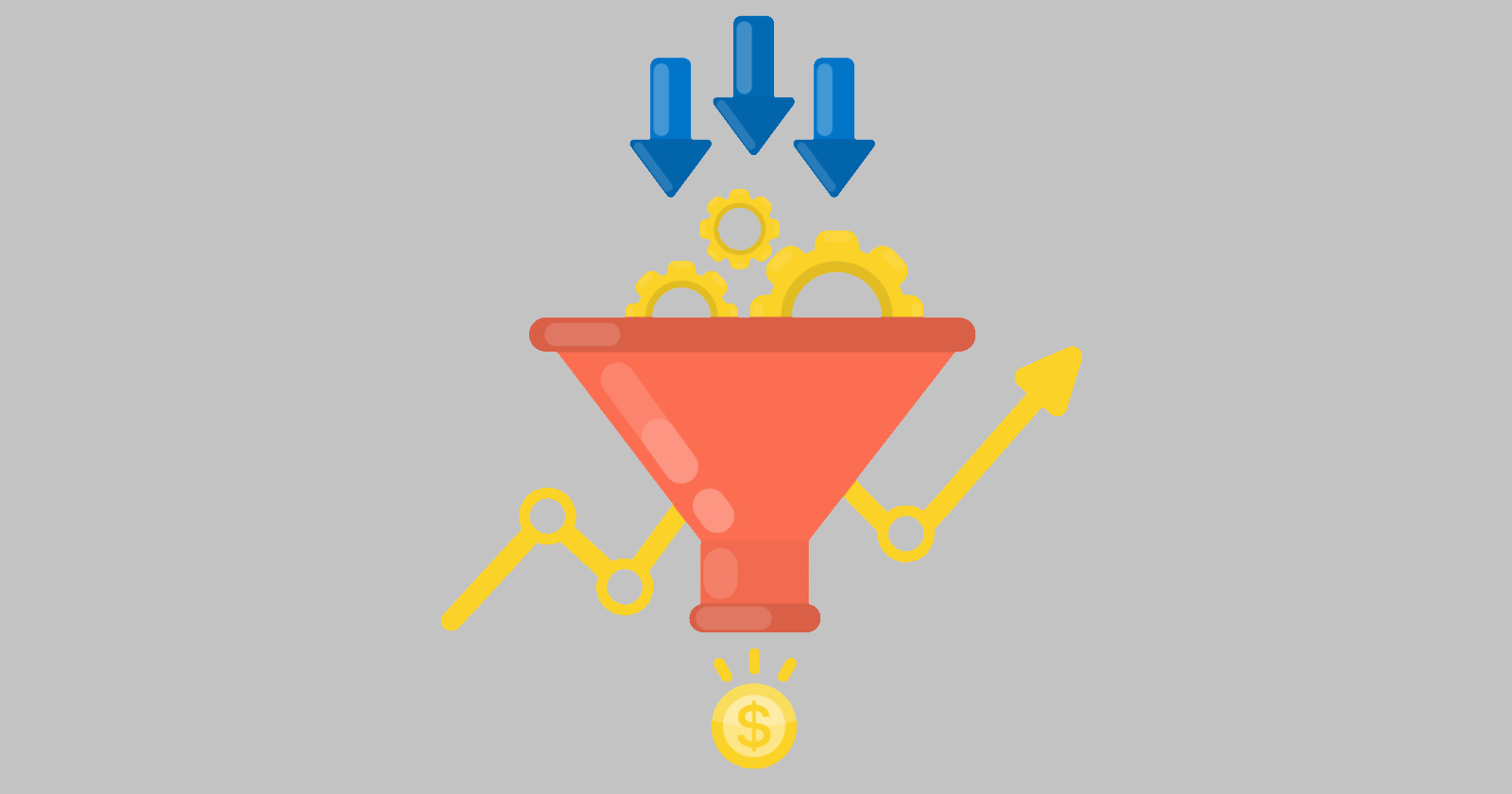Perhaps you’ve heard The Byrds croon out these famous lyrics:
To everything (turn, turn, turn)
There is a season (turn, turn, turn)
And a time to every purpose, under heaven
A time to be born, a time to die
A time to plant, a time to reap
A time to kill, a time to heal
A time to laugh, a time to weep
In these words (little-known fact: they’re actually pulled from the Biblical book of Ecclesiastes), we’re reminded that specific actions often have specific purposes… it’s just all about timing.
As we think about PPC, I can’t think of a more important principle for auditing low conversion rates in your account than this.
The reason this principle is important is because there is a strong temptation for a client who has hired an agency (or a boss and a PPC employee!), to become overly fixated on fixing audiences (i.e., your marketing) when that may not really the problem.
It takes a deep knowledge of the account and advertising space (as well as a little guts), to push back on this, but pushing back may be the very thing that saves the account.
If you focus on filtering audiences when that isn’t the solution, you will strangle your marketing funnel and the account will suffer a slow, painful death.
Let me illustrate what I mean practically before offering a solution.
Painful Illustration You Can Relate To
Your client is a lawyer in California who wants to offer a solution for people whose insurance companies screwed them over during wildfire season.
You are the PPC analyst, and you identify and bid on awesome audiences targeting people who are actively interested in insurance claims, as well as lookalike audiences based on client cases.

You also dug into Search queries and identified high intent terms that you bid on:
[wildfire insurance claim]
[fire insurance lawyers]
[insurance claim laywers]
Etc…
You aren’t a newb at PPC, and you have ultra-targeted Exact match terms in the account, and even some Broad Match Modified to pick up other targeted queries with the budget you have left.
You have checked Search Query reports and can vouch for the targeted queries sending traffic.
In fact, you’re killing CTR and average positions on those top terms and you have to admit, you’re a little proud of the account. I mean, you nailed it.
The campaigns are pushed live for a couple of months, contact forms begin to be filled out and customer info is sent left and right (think George from “Seinfeld”, snapping).
You optimize your bids and ads based on this, and all seems like gravy.
What a great account!
You smile.
Then the client calls.
The campaigns aren’t working. What can they do to help?
They begin to micromanage your every move.
Is this keyword problematic?
Why did you use “the” instead of “a” in the ad?
Those Facebook ad pictures should have a brunette instead of a blonde.
You know. The important details that will really move the needle. 🙄
You begin to learn that the contact forms aren’t converting over to actual cases signed by the lawyer and the client is convinced your targeting is the reason.
What do you do?
Audience Optimization vs. Post-Lead Optimization
The more conversations I have like this, the more I have become aware of the two key sides to solving the Sign-Up to Subscription issue.
That’s SaaS terminology, but it really is a B2B, lead generation problem.
What do you do when you the lead quality dips?
There are two primary places you can look:
- Audience (the marketing)
- Post-Lead Optimization (the client)
Audience Optimization

The client is naturally going to want to focus on audience filtering because, well, it’s easy.
It’s someone else doing the work. It’s the third party who must have screwed something up, and frankly, there are a lot of third parties who make terribly audience decisions so this is a warranted step.
In this step, we look at the type of traffic we are sending. Can we improve on our ad timing, ad creative, keywords, bids, devices, etc.?
This is marketing, and there is nearly always improvement that can be done here.
However, this is not the whole story, and there is a real danger (perhaps you are now thinking of an exact conversation you’ve had in the past) of becoming so fixated on the marketing aspect that the client-side responsibility is neglected.
Post-Lead Optimization
This is the second aspect of improving lead quality, and one that resides entirely on the client side. It takes a lot of work, and it requires insane amount of buy-in from the client.
In this part of the focus, the argument is made that the audiences are not the primary problem, rather the client’s ability to convert them is the problem.
Go back to the lawyer illustration from before. In this instance, the client may attack the keywords saying something like:
“People who type in attorney rather than lawyer have shown us to be a less valuable audience. They have a higher lead to case-close ratio, so please stop bidding on the word ‘attorney’ and we’ll see that CPA lower and be happy.”
This makes a lot of sense (and it actually could lead to lower directly tracked CPA), but there is a giant, gaping, account murdering, monster-sized hole in this logic.
Can you spot it?
Strangling the Funnel
The giant gaping hole is that the client is asking PPC to do that which it cannot, convince the user of the value of their services… and in doing so, the request to limit the (good) audience to eke out a better KPI is actually killing what marketing is supposed to do: fill the funnel.
Fill. The. Funnel.
Yes, the funnel needs to be filled with a certain level of quality audience, and we can’t just find cheap clicks from bots in Outer Mongolia.
I know that, and you know that. I’m talking to great PPCers with this post. For the most part, you’re not sending crap traffic.
You’re sending people interested in learning about how the client can solve their problems.
If that is truly the case, then it’s now up to the client, to sell that solid audience at their own value.
I’ll say it a different way: marketers send qualified audiences, but it’s up to the website (client) to convince that traffic to convert to the macro-conversion.

What I mean is, if we try to filter by preventing certain kinds of people in our audiences from actually completing the form submission, then we can probably increase the Lead to Purchase ratio… but we’re not ultimately filling the funnel with potential customers who should have been willing to convert.
I think an account will ultimately see exponential growth, not by limiting the customer base by continually trying to filter out people actually interested in the product, but by more successfully identifying how to convert more of those “other” people already showing interest, but not yet bought in.
At the end of the day, the big issue isn’t that those “other people” were not the perfect demographic, age, location, or gender (audience demographics tied to marketing, so they can be improved by adjusting the marketing).
No, the big issue is that someone interested in your product/service proved that by submitting your macro-conversion, but then wasn’t ultimately convinced by your site or follow-up process as to why they would get increased value paying for your product/service rather than going off to find another option.
When to Fix Audiences & Change Your Offer
This is where identifying the right kind of conversion rate optimization is massively, hugely important.
Conversion rate optimization, with the intent of shrinking the funnel, is an account killer.
If you think the way to solve your lead problems is by limiting a good audience, then you’ll never blow up (in a good way).
This is because you’re actually shrinking a solid audience, who is interested in what you have to offer by not fully convincing them of the reason they should choose you over your competition.
That’s not marketing’s fault, and it will never be.
Marketing is supposed to fill the funnel with great traffic. The website’s job is to convince that traffic why they’re the right choice.
So, which problem is yours?
Are you sending crappy traffic and audiences? Are you sending people not interested in your product because of poorly chosen audiences or keywords? Then fix the marketing problem.
Are you sending the right traffic, but no one wants to purchase? If you try to limit marketing, you’re only hurrying along your own death.
You need to focus rather on improving your offer, stepping up your email strategy, optimizing your landing page speed, or even drastically changing your business model around.
I love marketing and think it’s amazingly powerful, but the best marketing won’t fix a bad product, website, or offer.
More PPC Resources:





